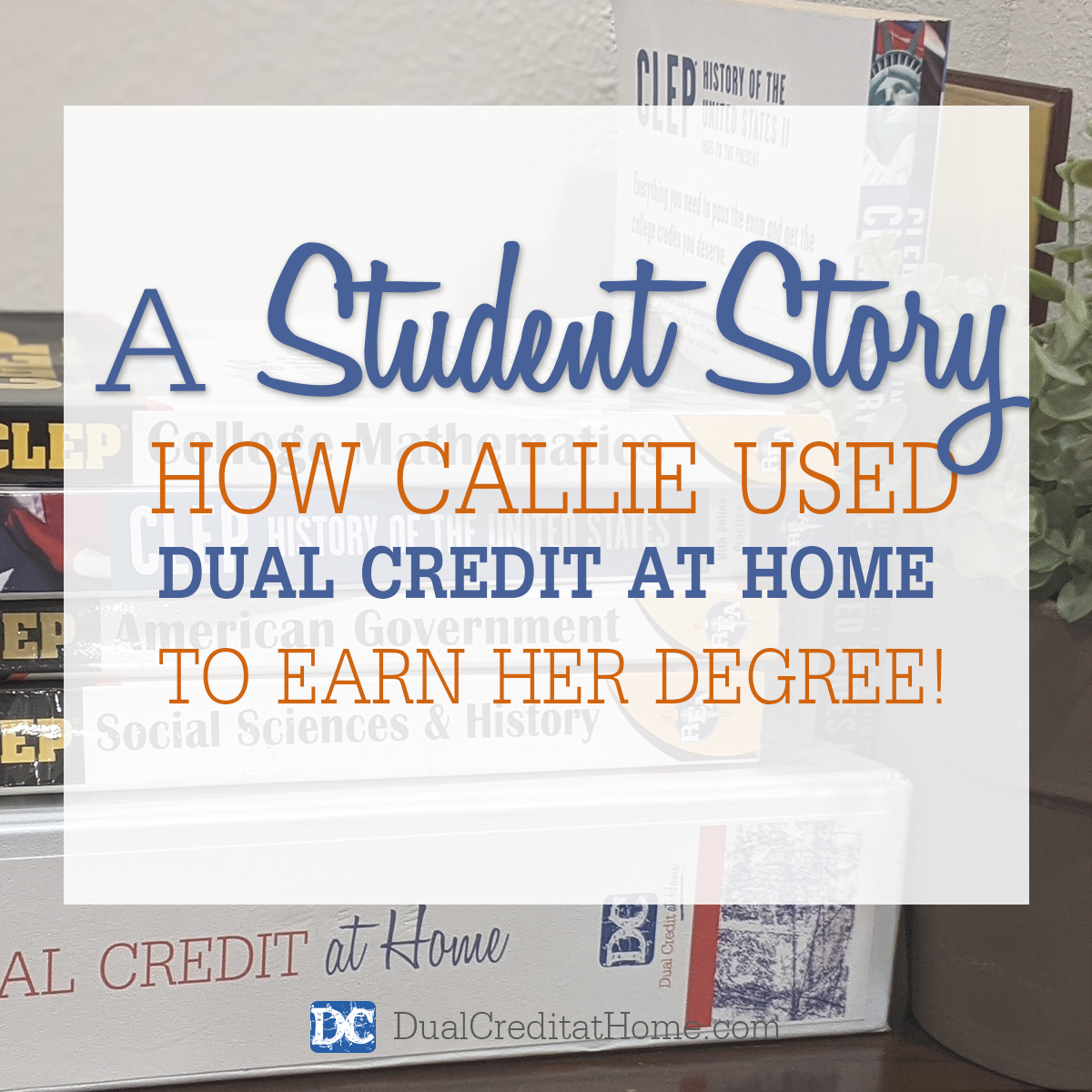There is a story in a children’s book about a young man plowing a field and trying to keep the rows straight. He did it by choosing a visual mark in front of him, and then one farther away.

When he kept both marks in an alignment he could keep his rows straight across the field. Like the visual marks across the field, it’s important to encourage our teens not to look ONLY right in front of them, but at some marks farther away that they can use to keep their life goals in sight and make sure they are heading the right direction.
Right now our teens are either in or preparing to be in high school. Have they begun to think beyond that towards college?
If your teen has started to look that direction, we understand that there’s a lot to consider and process.
Researching and preparing for college can be confusing and even stressful, but there are some things you can do to make it easier for everyone.
Let’s focus a moment on some super practical basics about college and credits. Before you fill out applications, schedule college visits, and research scholarships, here’s what you need to know:
College Costs & Statistics
Let’s start at the very beginning. What will your student achieve by pursuing a college education? How much will it cost, and how can your family make college a reality without crippling debt?
Whether your teens homeschool or attend school outside of the home, college is the next logical step for most students. A college degree is important in most (but not all) professional careers.
According to the Bureau of Labor Statistics, the unemployment rate for students with a high school diploma was 5.2% in 2016, compared with just 2.7% for those with a Bachelor’s degree. Bachelor’s degree holders also earned an average of $464 more per week than high school graduates.
The downside to that college education is, of course, cost. According to a Forbes article from 2015, the cost of a four-year education at a public university is $112,000, and private colleges are more than double that figure. Those costs are projected to rise at a rate of at least 4.5% annually.
You know that a college education is important, but did you know that there’s more than one way to earn an accredited degree? No matter what degree program your student decides to pursue, they will, without a doubt, have to take a series of general education and core classes in order to meet their degree requirements.
What many colleges don’t want you to know, is that students can earn some or all of these credits without setting foot in a college classroom.
General Education and Core Credits
Let’s talk about the credits that make up a degree. Typically a degree is made up of three kinds of credits: general education (sometimes called “core”), credits that are specific to your major, and electives.
General education credits are the ones that feel like a repeat of high school. Different majors and degrees may have slight variations for general education classes, but most often they will include fine arts credits, history, lower levels of math, and some sciences such as biology.
Credits specific to your major, on the other hand, are the classes that make up the specialized part of a major. For example, a history major may require in-depth classes on civilizations and cultures.
Lastly, there are elective credits. Electives may be chosen by the student from a range of options.
With three types of credits to choose from and 120 credit hours to earn, a college education is not something to enter lightly, or blindly.
One of the best-kept secrets of making a college education simpler is to use credit-by-exam programs such as CLEP to earn college credit even before applying to college – often while a student is still in high school!
How CLEP Can Help
CLEP stands for College Level Examination Program. These exams are administered by the College Board as a way to test proficiency in general education subjects.
Many colleges and universities across the United States will grant college credits to students who pass CLEP exams, which allows these students to completely bypass attending general education classes, and occasionally some other classes as well.
The benefits to earning CLEP credits are many:
– Because students can skip general education courses, college becomes more affordable.
– Students can study for CLEP exams at home, and spend less time in college taking courses in their chosen major or degree program.
– Homeschooling students can take CLEP exams and earn college credits, allowing them to transition to college-level work while they are still in high school.
– CLEP exams can help students determine if they are ready for more challenging courses that will be necessary to earn a degree.
The transition from high school to college doesn’t have to be full of stress and financial burdens. CLEP is a great way for students (and parents) to ease into college-level coursework while saving time and money in the process.
If your teen is looking ahead and considering what kind of “visual marks” to set toward their own college path, they may want to learn more about college-level-exam programs and how they can help to streamline their college experience.
Knowing what college they’d like to attend and what degree they’d like to earn is helpful in knowing whether CLEP credits would benefit them. But many teens don’t have the answers to those questions yet.
It’s helpful to have all of your options in front of you when making big decisions like that, so if you’d like to know more about how CLEP and other credit-by-exam programs can help you and your teen save on college, attend my free online workshop. You’ll learn eight clear steps for earning an accredited bachelor’s degree during high school.
Get Becky’s Weekly Newsletter on Homeschooling High School
We will never sell or share your email address.



